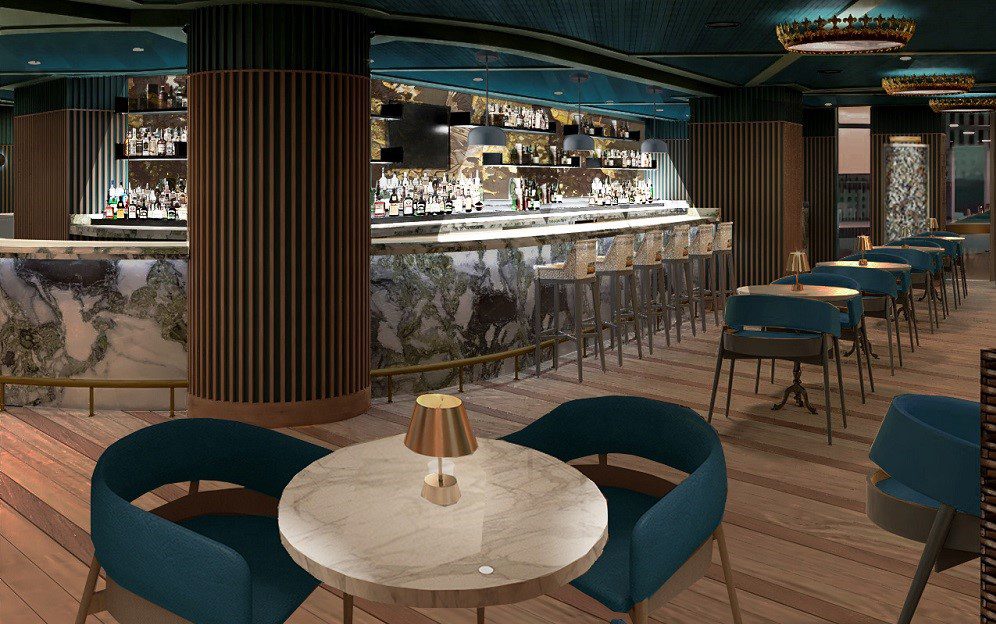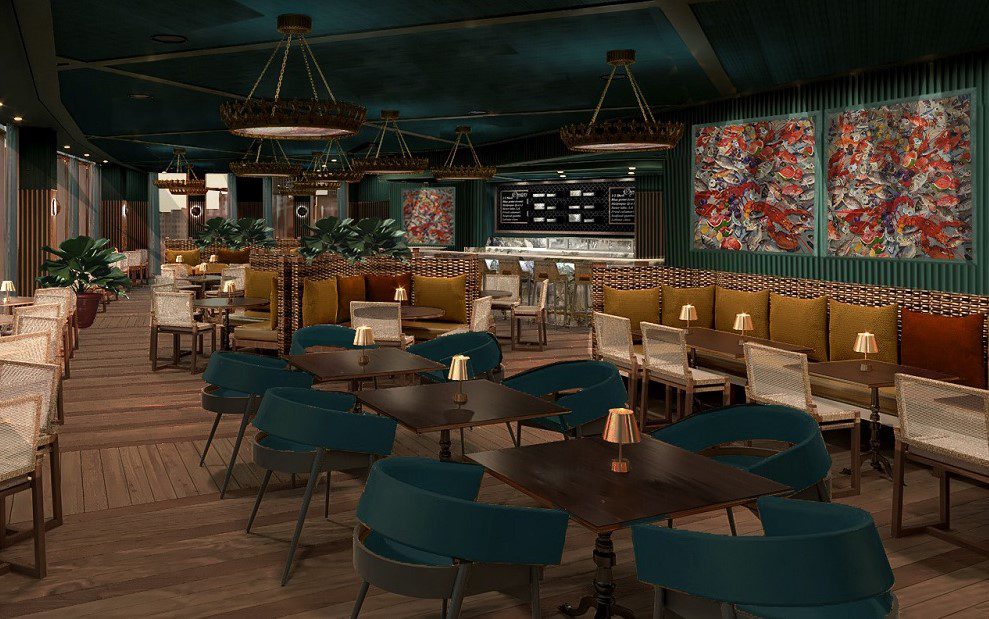Dining Room Experiences and the Future of Travel
Buildings.com - March 25, 2021

Dining out in restaurants is an important component of our lives in America. We all love to go out for a meal, and whether it’s fast casual dining or a higher-end restaurant experience, the act of arriving and the enjoyment of sharing a meal in a café, bistro or luxury environment has become a part of the fabric of our social lives. It is as much the exploration of new cuisines as it is the chance to be engaged with friends and loved ones in a pampered and highly social setting—or least it was.
The pandemic has altered all of that over this past year and while we may soon be emerging from the worst of it, and restaurants are re-opening across the nation, it is still too soon to say when eating out will be back to what was a normal, unencumbered pleasure.
What was that norm? To me, this was energy, happiness, laughter and conversation; a tastefully furnished room full of engaged individuals conversing with one another, enjoying their time together while overlooking a crowded bar and an active mixologist; food that is prepared with flair and exciting flavors—as theater and art form—that shared the stage with closely spaced patrons enjoying interactions with one another.
And today? Well, dining today is the most repressed of businesses due to the pandemic. For those restaurants that were capable of remaining open in some fashion, social distancing has altered the vibe. Takeout has become necessary to maintain economic sense for many restaurant owners, and those establishments that remained open have improvised partitions of plexiglass and louver screens to shield guests from one another.
Tables are spaced six feet apart; bars are closed or have plexiglass shields between bartenders and even other patrons. In short, it is an industry that has made accommodations but that now needs some reimagining for it to remain vital, at least for the near term.

Imagining the Future of Dining Design
How could this happen and what may it look like? First, restaurants will need to accommodate flexibility in planning. Fixed table spacing will likely remain forever modifiable, further apart today and perhaps closer together once again in the future, but spatial distancing is not necessarily a bad thing in a restaurant.
Right now, we are distanced for health reasons, but if we re-think the problem where space is rebranded as “luxury,” then the dining experience itself is redefined and transformed. Social distancing becomes a positive which may alter how we view our dining experiences in the future.
New restaurants can easily create a sense of separation and protection from other patrons without making the experience feel makeshift. Creative design can clearly achieve this objective. For interior spaces, designers will likely find new solutions as to how we sit and interact. For example, paying close attention to the use of décor, decorative glass screens, or high-backed booths in addition to other design devices, will add sophistication, distinction and elegance to social distancing and separations, with the ability to be modified over time as health concerns diminish.
It has been equally exciting to see the clever use of outdoor dining spaces that have come into style this past year. Whether in the form of dining igloos, yurts, tents or open patios, diners love eating alfresco.
Interior layout is one thing, but are there other approaches restaurants could take to make a dining experiences even more enticing and inviting while improving safety and cleanliness for its patrons?
The obvious answer is through better sanitation, cleaning of surfaces with anti-microbial cleansers, ultra-fine particulate air filtration, temperature screens for guests and more.
Deep cleaning in the dining areas, using disinfectant on the tables between diners and going beyond traditional sanitary conditions in the kitchens will be the norm form henceforth. For newly constructed restaurants, air flow and air filtration will be of prime importance for the safety and comfort of the guest and employee. But perhaps if we look back in history to dining experiences of the past, there may be some sound ideas for us today as well.
How Serving Could Change
Traditional dining and delivery of open food laden plates could easily be replaced with the old-world gracious delivery of your dinner by a server carrying a domed cloche, a stainless steel covering for your food. Keeping with tradition of the early parts of the last century, having the server present a dome tableside and then removing it with a flourish was a great spectacle and a symbol of dining elegance. Maybe it is time to reintroduce this gesture into today’s dining room once again?
Or perhaps a more contemporary approach borrowed from past cultures and traditions but made new. What if meals were presented to the guest in a re-imagined, but thoroughly modern, Japanese-influenced bento box with a lid? Not only does this form of presentation provide safety from airborne viruses, it also doubles as an insulator for keeping food warm and fresh from the kitchen, not to mention it is aesthetically pleasing. This approach creates a new form of dining elegance that protects and elevates at the same time.
Open buffet breakfasts and salads need to be eliminated, along with sneeze guards. While they are cost-effective for the restauranteur, they leave food exposed and prey to unwanted contaminants from our fellow diners.
Likewise, bars could offer drinks and cocktails presented with stylish removable coverings to protect the precious liquid contents. We could take a cue here from the early church, which historically used a chalice veil of silk or linen over the sacred wine. Wouldn’t it be grand to have your cocktail served with a flourishing decorative covering? It removes the ordinary and replaces it with the extraordinary.
As architects, my colleagues and I are optimists at heart. No problem is unsolvable. As for restaurants, they are too important to our way of life and to the livelihoods of millions to not want them to revive, be prosperous and again be the gathering places we long to visit.
One day soon we will be able to enjoy dining out again and being in the company of others and the laughter will return. But let’s also learn from this crisis and modify with positive approaches the way we design, build, and how we serve guests for a prosperous and healthy future.